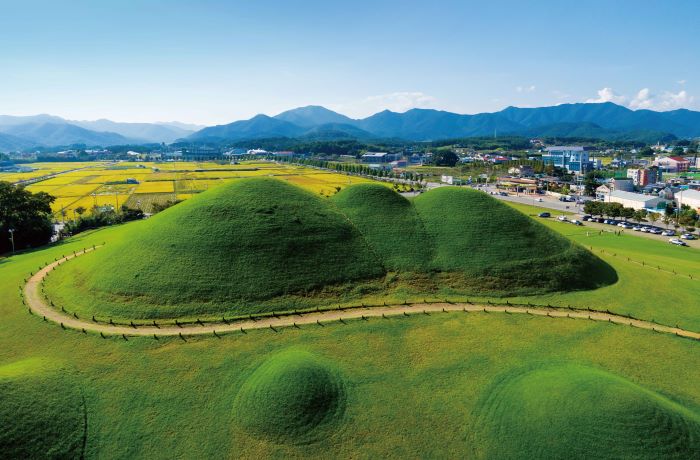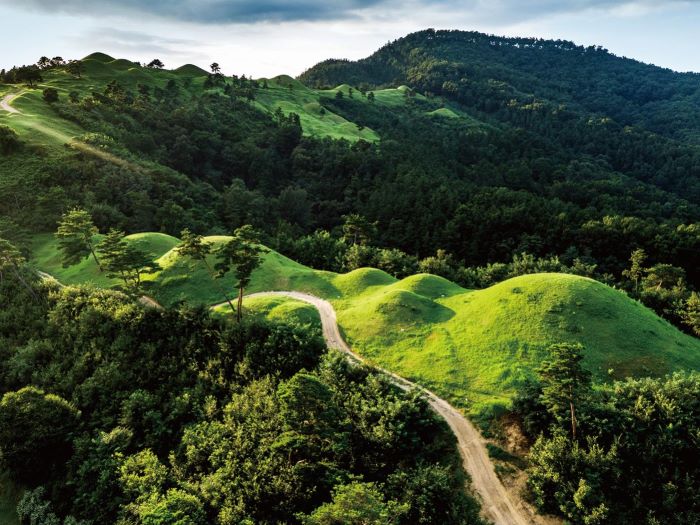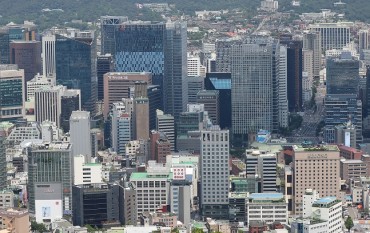
The tumuli consists of seven clusters of tombs that display the architectural style of graves built in the fourth and fifth centuries, along with burial accessories and goods showing Gaya’s network of trade and handcrafted manufacturing. (the photo from the Cultural Heritage Administration’s homepage.)
SEOUL, Sept. 17 (Korea Bizwire) – The Gaya Tumuli, which consists of seven tomb clusters dating back to Korea’s ancient Gaya confederacy, will be added to UNESCO’s World Heritage list.
The decision was made during the 45th session of the World Heritage Committee, held in Riyadh on Sunday (Saudi local time).
The committee said the Gaya Tumuli is estimated to possess “outstanding universal value” as material evidence of a rare political structure that maintained autonomy and a horizontal relationship with neighboring countries, and shows the diversity of ancient civilizations in East Asia.
Earlier, the International Council on Monuments and Sites (ICOMOS), a cultural heritage evaluation advisory organization under UNESCO, recommended the inscription of the South Korean entry in May. Heritage sites that receive recommendations from the advisory body typically win final approvals from the committee with very few exceptions.
Gaya was a loosely knit federation of six or seven small kingdoms that prospered between the first and sixth centuries in the southern and central regions of the Korean Peninsula.
The tumuli consists of seven clusters of tombs that display the architectural style of graves built in the fourth and fifth centuries, along with burial accessories and goods showing Gaya’s network of trade and handcrafted manufacturing.
The seven cemeteries were all sited in highly visible hilly areas in the political center of their respective polities. These sites exhibit dense concentrations of burials that were constructed over extended periods of time.

Jisan-dong Tumuli in Goryeong County, North Gyeongsang Province, a cluster of tombs of Korea’s ancient confederation Gaya, is seen in this photo from the Cultural Heritage Administration’s homepage.
While deciding on the inscription, the committee also urged South Korea to step up its efforts to better protect the heritage.
It recommended mitigating the impact of the road that runs between two of the seven tumuli sites and purchasing privately owned land at the seven tumuli sites to ensure the stable preservation of each heritage. It also called for the establishment of a system to comprehensively monitor the seven sites.
“We’ll do our best to preserve the value of the Gaya Tumuli, which is recognized by the world, and promote it widely so that it can become a world heritage loved by many,” said Choi Eung-chon, the head of the Cultural Heritage Administration who visited Saudi Arabia for the meeting.
The new addition brought to 16 the number of South Korean sites inscribed on the UNESCO World Heritage list.
Of them, two are natural sites — Jeju volcanic island and the lava tubes on the southern resort island, and the Korean tidal flats. The 14 others are cultural, including Seokguram Grotto and Bulguksa Temple in Gyeongju, North Gyeongsang Province, and Changdeok Palace and Jongmyo Shrine for deceased kings and queens of the Joseon Dynasty (1392-1910), both in Seoul.

Changnyeong Gyo-dong and Songhyeon-dong Tumuli, a cluster of tombs of Korea’s ancient confederation Gaya located in Changnyeong, South Gyeongsang Province, is seen in this photo from the Cultural Heritage Administration’s homepage.
(Yonhap)






